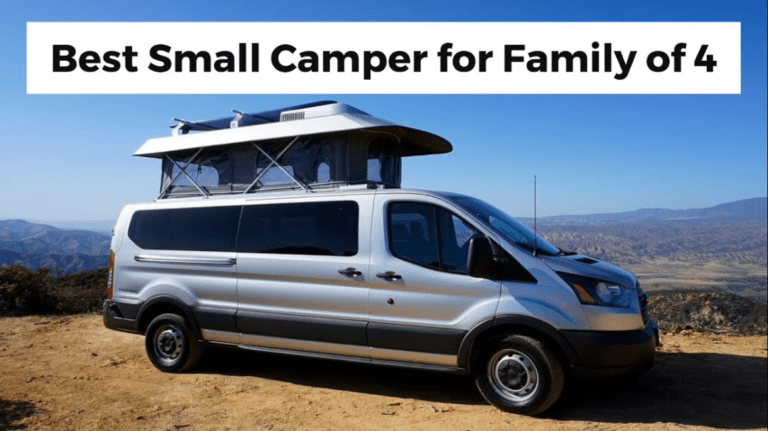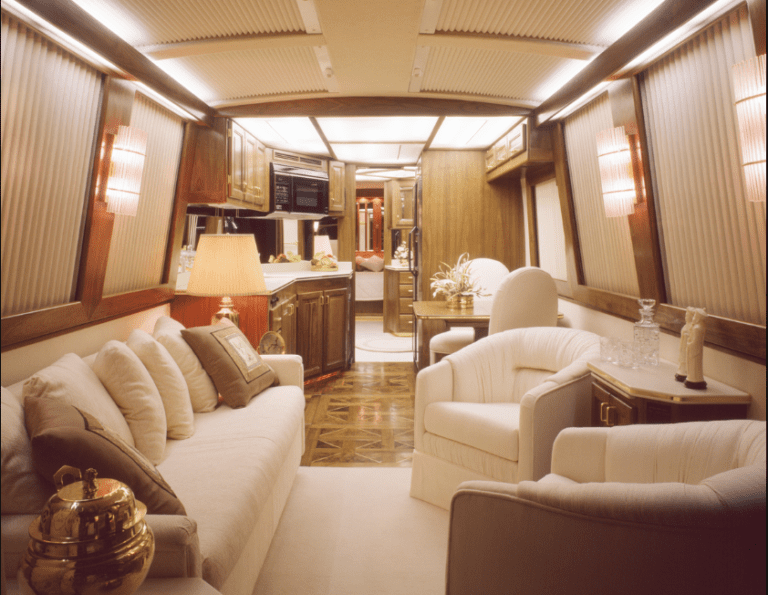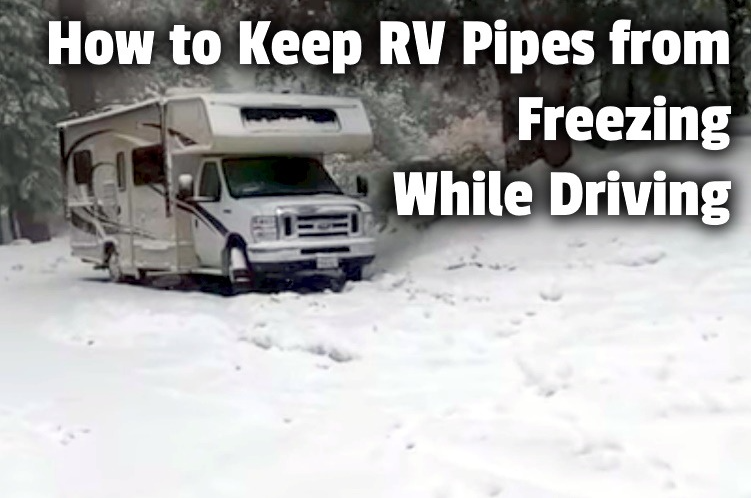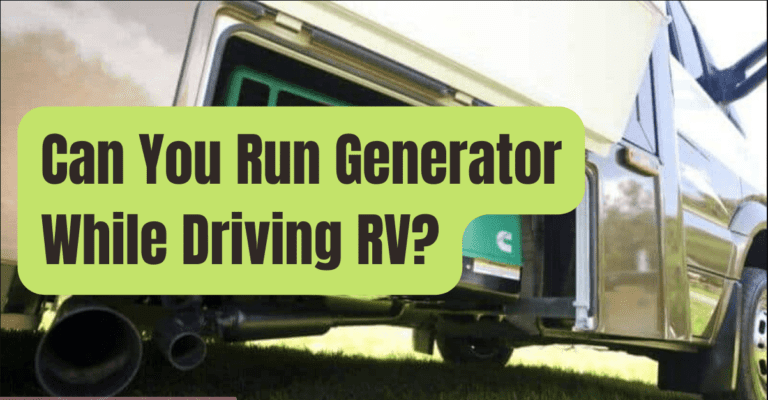Different Types Of RV Awning

RV Awning Types
Camping in an RV can be an incredible experience as we get to spend time with family and friends. RVs are well equipped, so long trips are never a problem.
Add-ons are a great way to make our experience even better, and awnings can do just that. Awnings basically expand the usable area of our RV.
Choosing the right awning can be especially important. We want to choose the right awning that suits our needs and is also reliable. We will discuss the different types of awnings, their pros and cons and more.

There are many types of RV awnings and they can be a great accessories to add to your RV. The main purpose of an awning is to provide shade and cover for your RV. It can also be used to create a campsite with your RV.
The point is that they perform many functions and are extremely versatile. If you make the right choice, it can make your camping experience even more enjoyable. We’ll take a look at six different types of awnings to help you decide.
1. Acrylic awnings
RV Awning Fabric Replacement – Acrylic for Dometic with Existing Metal Cover (18′ (Fabric 17’2″), Cadet Gray)
Acrylic awnings are made from a woven material that provides great air circulation. They protect against inclement weather and are great for sun protection.
The versatility of acrylic awnings makes them a great choice, although they have some drawbacks that may make them the wrong fit for you.
Pros
Great air circulation
Because acrylic awnings are made of woven material, air can continuously flow through the material. This means the temperature under the canopy will be cooler, which is great for hot summer days. Better circulation also provides protection against insects and bugs that thrive in warm environments.
Durable against bad weather
Due to the design of acrylic awnings, they are able to withstand adverse weather conditions such as strong winds, debris, extreme heat and snow. Of course, it has its limitations, but for the most part, it works great in bad weather.
The versatile nature of acrylic paints makes them perfect for traveling to different parts of the country.
Fast drying times
Acrylic awnings repel water from their surface and it works very well. However, some water will always remain behind, but its content allows it to dry quickly.
This is useful when you’re trying to use it after it rains, or trying to fold it up before leaving. Whatever the case, it’s a great feature.
Cons
Not waterproof.
Although acrylic awnings do a good job of preventing water from seeping through, there are still small gaps in the woven material. Water can seep through these small gaps, which can sometimes be harmful. If you are cooking or trying to start a fire, water can interfere with your activities.
Can be expensive.
Acrylic awnings can be quite expensive. If money is not an issue for you, they are a great choice. For people with more money, this may not be the most budget-friendly option. Whether or not the price tag is worth it depends on whether you think the benefits are worth it.
2. Fixed RV Awning
An RV with an extended RV flashes an old woman sitting outside.
A fixed awning is a permanent awning attached to your RV. They provide protection against the sun and some bad weather and can be very useful when you are parked. Unfortunately, fixed awnings have many disadvantages associated with them.
Pros
Protection from sun and rain
Fixed awnings can be great for protection from the sun or rain. The best part of this fixed design is that it always shields your cabin from the sun, so the inside of your RV can stay cool. It can also protect you from debris while driving on the road.
Cons
Can fall while driving.
Because it always stays in place, a fixed awning can collapse when the RV is in motion. Not only can this cause a fatal accident, but it can also prove to be very costly. Although this is unlikely to happen, there is still a possibility that it could potentially happen.
Permanent maintenance
Fixed awnings require more maintenance than other models. They stay in place all the time, which means they constantly experience all kinds of weather.
Materials may be damaged, debris may form, and rust may occur. This requires you to constantly clean the awning and monitor it for damage.
3. Automatic awning
ALEKO RV Retractable 12×8 Foot Manual Awning 100% PVC Canopy, Cover, Sun Shade, Camper Trailer or Patio Shelter – Black Faded – RVAW12X8BLK11
This is one of the more expensive options you can choose for your RV. It is very easy to use and can be very convenient. It can be controlled with a touch of a button. If you have the extra cash needed to install it, we’d recommend going with this option.
Pros
Very easy to use.
The automatic awning is controlled with the push of a button. This button can either deploy or retract the awning. It requires less effort to control as compared to a manual awning. The level of convenience makes it very attractive to most buyers.
Great technology
While not all automatic awnings come with standard sensors, most of them do these days. These sensors can retract the awning when it senses freezing temperatures or strong winds. The sensor is also great if you forget to retract your awning as it will protect it from further damage.
Cons
The most expensive
Price is probably the first thing most people consider before buying anything, including awnings. Automatic awnings are very fancy and use electric motors. This use of technology makes them more expensive than other awnings.
Repairs can also be quite expensive due to the complex nature of awnings. More moving parts usually require more maintenance and upkeep. You should take precautions to minimize the chances of damage to your awning, but sometimes you just can’t avoid it.
Not versatile enough.
Automatic awnings do not provide much in terms of versatility. Once deployed, it usually sits in a fixed position. You are unable to adjust them to the position you like, which can be very painful. They are also not very good in heavy rain without the use of additional support.
Installation is difficult.
Most awnings are easy to install and can be done as a simple DIY project. However, installing an automatic awning can be very difficult. They usually require more time and more precision to install. Installation is usually done by a specialist, which can be quite expensive.
4. Vinyl Awnings
Shade Pro – RV Awning Fabric Replacement – Heavy Duty Weatherproof Vinyl – Universal Outdoor Canopy for Camper, Trailer and Motorhome Awning – Walnut Brown – 21′ (Fabric 20′ 2″)
Vinyl awnings are a very popular option among RV users. They are cheap, easy to use and offer great protection. These awnings are also very durable, reliable and relatively easy to maintain. Like every other material, there are some drawbacks to going with vinyl awnings.
Pros
waterproof
It is the only one of them that is completely waterproof. You can do it under a vinyl awning without fear of getting wet. This added flexibility allows you to continue activities like cooking or enjoying the outdoors. It also makes it great for snowy areas and offers more versatility.
Durable
The design of the vinyl awning makes it difficult for the sun’s UV rays to penetrate, and it protects you from dirt, dust and grime. On hot summer days, protection from UV rays is essential to avoid sunburn. Keeping your camping area free of dirt and grime is also great for keeping your general area clean.
Vinyl awnings are also tear resistant and fade resistant. Your vinyl will not begin to discolor when you leave it out in the sun, extending the life of your awning. There is no need to worry about your vinyl awning tearing, as vinyl is a very strong material.
Cons
Mold and mildew
Vinyl awnings are especially prone to mold and mildew. This is caused by the accumulation of water and dirt on the awning. When water sits on an awning, mold and mildew begin to form over time. It is important that you close your vinyl awning after each use and try to clean it as well.
Low air circulation
Compared to other awnings, vinyl awnings do not offer much breathability. It has no small gaps or holes that allow air to circulate. Although it protects you from the sun’s UV rays, the downside is that you’ll be hotter sitting under a vinyl awning.
take care of
Vinyl awnings must be cleaned and dried after each use before storage. If not allowed to dry completely, mold and mildew can easily form. This can be especially painful if you live in a rainy area. You have to clean it after each one to keep it in the best shape.
5. Slide-out awning
Awnlux Black Modular Slide Topper Awning Slide Out Protection for RVs, Travel Trailers, 5th Wheels, and Motorhomes -5’6″ (5’1″ Fabric)
Slide-out awnings are installed whenever you want and are mostly done manually. They are more budget-friendly options and are usually made of canvas. They are very easy to use and easy to maintain. The low cost of a slide-out awning makes it a very popular option for campers.
Pros
Budget friendly
Slide-out awnings are priced on the lower end compared to other awnings. Canvas is the main material used to make it, and it has proven to be cheap and reliable. Although it is not as durable in the long run as other awnings, it will still last for a very long time.
Easy to clean.
Because of the slide-out awning design, dirt and debris usually slide right out. The canvas material acts as a sort of repellent against this type of build-up. Going with this awning can potentially save you a lot of time and money in the long run if you keep up with the maintenance.
Cons
Water accumulation
A major drawback to using canvas awnings is the awning’s tendency to collect water. Water collects on top of the awning and can easily soak you when you try to retract it. This water build-up also attracts insects like mosquitoes, which can quickly ruin your day.
Not very durable.
Canvas is a very cheap material that can start to fade and crack over time. Water pooling on the roof can cause the entire awning to collapse. Although it is very easy to clean, maintenance is essential to extend the life of your slide-out awning.
What is the Purpose of RV Awnings?
As a bonus, RV awnings can be used for a variety of purposes. An RV slide topper protects the roof from debris and rain while providing shade and protection for the windows. Fabrics for RV patios increase the amount of interior space at your disposal.
Sheets are known for their longevity and low maintenance requirements.
Benefits of RV Awnings
An RV on a campsite with an RV awning installed.

Overall, awnings are fantastic to add to your RV. They provide many benefits that increase the overall utility of your RV. Your camping trip gets a whole lot better by adding an awning to your RV. Below are some of the benefits of awnings.
Provides shade.
Adapts to the RV, giving you a wide area of shade outside the vehicle. It can keep you cool in the summer and prevent you from running your AC all day. It is also great at protecting your body from the sun’s harmful UV rays. It can get really hot in the summer and sunburn makes it worse.
Keeps your insides cool.
An awning will not only keep you cool on the outside, but it also helps keep your interior cool. An awning blocks the sun from streaming down your windows, which can also protect your furniture and keep the temperature down inside.
Using an awning can save you money by reducing the need to keep your doors open and using the AC for longer periods of time.
Rain cover
Not all awnings are waterproof, but most are water resistant. Instead of sitting inside your RV when it starts to rain, an awning gives you the freedom to sit outside. You can enjoy activities like having a fire, cooking, or just talking with your family. An awning can also keep the area nice and dry when the rain finally stops.
Easy to use and maintain
RV awnings are very easy to operate and maintain. Many are manually controlled, although many manufacturers are implementing electric motors that allow you to control them with the push of a button. Manual models are also easy to use and do not require much effort to deploy or retract.
Maintenance is also quite affordable. Most materials used on awnings allow them to be easily cleaned with just a few household products. When you wash your RV you can also clean your awning making it easier to clean.
Different parts of an RV awning
The basic structure and fabric is the same on both manual and automatic, although the process of operation is different. Be sure to read your owner’s manual for the exact operating procedures for your specific make and model of RV awning.

Automatic Awning Parts
A powered awning uses either 120AC or 12V DC power, depending on the particular make and model. Electricity comes from the RV’s main power supply with electrical lines running through one of the awning arms. Your RV does not need to be plugged in, but you will need to run your generator or turn on your inverter to run it. The arms extend and retract with the canopy using gas pistons on a spring tension system. Depending on the size of the awning it may have two or more arms. There is a manual override to open and close the automatic awnings manually if the motor is not working or you have an electrical problem.
Manual Awning Sections
A manual awning works with the use of a torsion spring mechanism that is mounted in the awning roller tube. It has a switch to move to retract or extend and then you use the awning rod to pull the strap through the center of the awning until you reach the strap and continue pulling until That it does not rise completely. You then extend the inner support arms to the outer support arms on each side and raise the awning on both sides. It helps to lift each side at the same time, or you can lift one side partially up, then go to the other side and partially lift it up. Keep repeating until it opens completely.
Additional Accessories for RV Awnings
There are many different types of accessories you can add to your RV awning to make it feel like home.

RV patio awning
Patio Awnings
Patio awnings or sheltered awnings have additional fabric to create an outdoor room with a roof, walls and door. It gives you extra space with more than just shade. It can be an extra sleeping area with added privacy or you can store items in it when you’re parked. The walls also give you an extra splash-proof quality when it rains.
LED lighting strips
LED lighting strips provide enough light for you to hang out at night and enjoy the weather. They are simply cut to size, mounted under the outer edge of the awning or on the awning roller next to the RV and wired into an existing power source. Many LED lights allow you to adjust the intensity for a subdued glow at night or powerfully bright for outdoor reading.
Sun blockers and side blockers
Your awning will protect you from the sun and heat above, but you can be even more protected by using sun blockers and side blockers. They attach to your awning and can keep up to 85% light to create a cool and comfortable area even on the dog days of summer. They are transparent so you can still get a great view of the outdoors without having to deal with the glare of the sun.
Awning canopy extension
If you are traveling with a few friends or several families, you may need an extra large area of shade to relax around the outside. Canopy extensions create an extended outdoor living area with several additional feet of shelter.
Awning mats
Awning mats are stylish and very practical for your awning area. They add color to your area and they filter dirt and water that create a boundary between you and the ground. They are very helpful if it rains or rains and the ground is wet. Less water and dirt on your feet means less of these items getting in the door to dirty the inside of your RV. They also give you a level base to set up your chairs and tables instead of fighting over grass or lumpy rocks.
RV awning cover
If you don’t use your RV awning often, you can protect it so it lasts longer with an awning cover. It protects your awning when fully retracted with a durable cover to protect the canopy from debris and weather, which will also protect it from mold and mildew.
Awning fans
You can really cool your outdoor area with 12V fans under your awning. They simply clip onto the awning and most have no visible wires that are clearly visible.
Canopy speakers
Many people won’t leave home without having their tunes activated. You can add Bluetooth awning speakers that clip onto your awning without seeing cables and enjoy your favorite music stored on your phone or other smart device just by syncing it to the speaker.
There’s a huge world waiting for you to explore and as you can see now, you have plenty of options to create a large and comfortable retreat outside your home away from home while traveling in your RV. There are many options. Choosing an awning and adding your favorite accessories can make your time outdoors a very comfortable experience.
Enjoy the great views outside from your RV awning.
No matter which RV awning you choose, this accessory will become a much-loved addition to your rig. You’ll enjoy setting it up so you can dine and relax in the shade of the canopy while you take in the views of your campground and spend time with family and friends.





